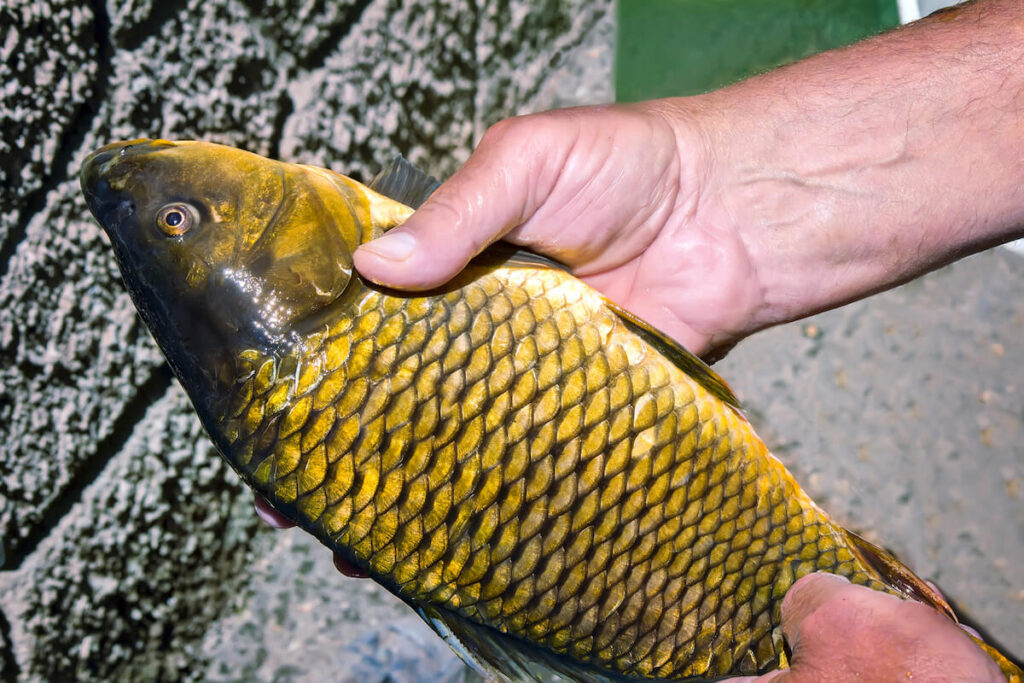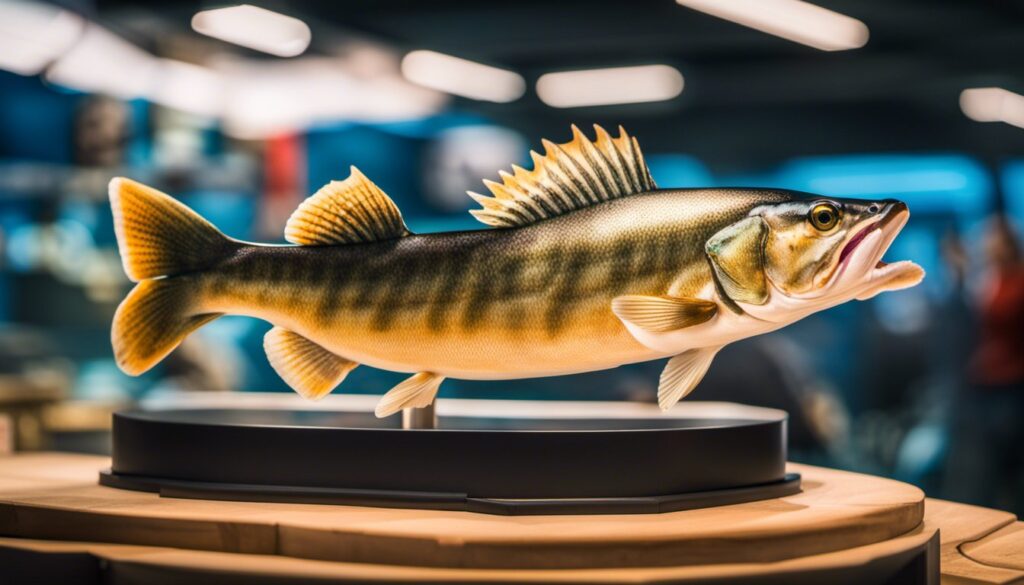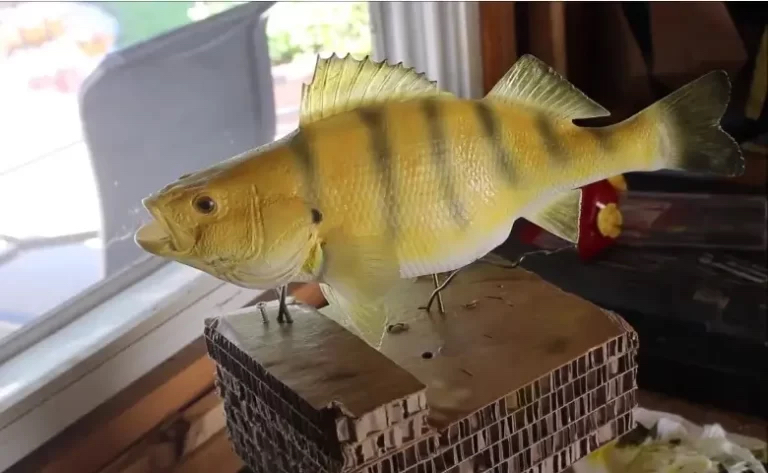So, you’ve just landed the best fish of your life – the one you’ve been dreaming of catching since that first time you felt your line tighten – and you’ve decided that it deserves a spot on your wall. But how much will it cost you to get the fish mounted? And what exactly do you need to do to make that happen?
Well, the answer isn’t as straightforward as you might think. There are a variety of factors involved in determining the price of mounting a fish – from the size of the fish to the method of mounting the fish to the type of fish you want mounted.
That’s where we come in. We’ll guide you through all the nitty-gritty details to help you get your trophy fish up on your wall for everyone to see (even if you released it after you caught it).

Fish Mounting Price Ranges
As we’ve mentioned, there are a variety of factors that impact the price of mounting a fish. Most taxidermists will give you a price based on the fish’s size, which is why it’s important to measure it if you’re going to release it back into the wild (more on that later).
In addition to its size, one of the main factors affecting the price is the type of fish that you’ve caught and, more specifically, whether it’s a warm-water, cold-water, or saltwater fish.
- Warm-water fish: Warm-water fish are generally the cheapest to have mounted and will cost you anywhere from $11 to $14 per inch.
- Cold-water fish: At the mid-range of the three categories are cold-water fish species. These are more expensive to mount because they’re generally oilier than warm-water fish, which impacts the drying process. Mounting a cold-water fish will cost from $14 to $18 per inch.
- Saltwater fish: Having a saltwater fish mounted will be fairly costly. This is due to saltwater fish also having oily skin, as well as salt causing complications in the taxidermy process. The cost to mount a saltwater fish should be from $15 to $20 per inch.
The Different Ways To Get A Fish Mounted
There isn’t just one way to get a fish mounted – and you don’t need to keep a fish to have it mounted either. In fact, with more and more people becoming focused on conservation, many are choosing not to take a fish home to be mounted. But that doesn’t mean you have to, too. There are also a lot of people who want to keep a real part of the fish that they caught.
The two options available are skin mounts and replica mounts. You’ll usually find these different methods costing pretty much the same price. Looking at those costs we mentioned earlier, a skin or replica mount could be anywhere from $11 to $20 per inch.
Skin mount
The first way to mount fish is through skin mounting. A skin mount is when a taxidermist will use the real skin of the fish.
A mold will be made that matches your fish’s size, after which its skin is placed around that mold. This is the method you’ll use if you want to keep the fish that you caught instead of having a replica made.

Replica mount
A replica fish mount is just as it sounds – it’s a replica of the fish that you caught.
If you’re the type of person who likes to catch and release your fish, this is the method for you. Since the taxidermist will not have the real fish that you caught, they will utilize a variety of materials to create a replica.

These days, high-quality fish taxidermy has become a lot more advanced. This means that many taxidermists will be able to create extremely realistic fish replicas.
Preparing To Have Your Fish Mounted
Of course, you can’t just throw your fish into your backpack and take it to a taxidermist three weeks later expecting things to be perfectly fine. There are certain things that you will need to do whether you want to have your fish skin mounted or replica mounted.
Preparing for skin mounts
For a skin fish mount, you will want to preserve the original fish as well as possible. Here are the things that you must and must not do if you opt for a skin mount:
- Do not gut the fish.
- Pick a side that looks the best to you – this side must be facing up when you put it in the freezer.
- Soak a towel in water and wrap it around your fish.
- Put the wet, towel-covered fish into a large plastic bag to prevent it from getting stuck to your freezer and avoid freezer burn.
- Place the fish best-side-up into your freezer and allow it to become completely frozen.
- Contact the taxidermist to determine when you can take the fish to them.
Preparing for replica mounts
For replica fish mounts, you will want to get as much information about the fish to the taxidermist as possible (since you won’t be giving them the actual fish). This will help them to create a replica that is as close to the original as possible.
Here’s what you’ll need to do:
- Keep the fish in the water until you’re ready to take photos. This will help keep the colors vibrant.
- Take pictures of the fish and all of its little details. This means taking a picture of both sides of the fish and getting close-up shots of its different parts. The more detail that you can capture in the images, the better.
- Take measurements of the fish’s length and girth. You should also weigh the fish at this point.
- Remember to take the fish’s level of comfort into account during the whole process and put it in the water to allow it to breathe if you think you’re taking a little long with everything.
- Contact the taxidermist and discuss how you will be sending them all the images and information. They’ll handle everything else to get a replica of your trophy fish mounted.
How Long Will A Mounted Fish Last?
The amount of time that a mounted fish will last depends on the quality of the work done by the taxidermist. If you pick a reputable person to do the fish taxidermy process for you, your fish could last a lifetime.
There is always the possibility of complications during the fish mounting process; especially when it comes to a skin mount. Replica fish mounts won’t have as many complications, because synthetic materials such as fiberglass will be used instead of the fish’s skin.
FAQs
How long do fish mounts take?
The amount of time that a fish mount takes to be made will vary depending on who is creating the mount, the level of detail, the type of mount being made, and whether or not there’s a waiting list. Some taxidermists will offer a turnaround time of four to five weeks, while others may only be able to get it back to you in 12 to 14 weeks.
Can you mount a fish yourself?
While you can mount a fish yourself, if you don’t know what you’re doing, it could cause complications. For example, you may damage the fish or the mount may not last as long. If you’re not sure that you will be able to do a good job, it’s always best to get it done by a professional.
How is a fish mounted?
When a fish is mounted, it will first be cleaned, degreased, and preserved. A mold will then be made to fit the skin around. If you want a replica mounted, a professional will look at all the images and information that you’ve provided and create the replica from fiberglass and/or resin.
Where do you hang mounted fish?
You can hang a mounted fish wherever you like. It’s your trophy, so you can choose where you’d like to hang it around your house – whether that be up a staircase, behind a bar, or in your living room.
